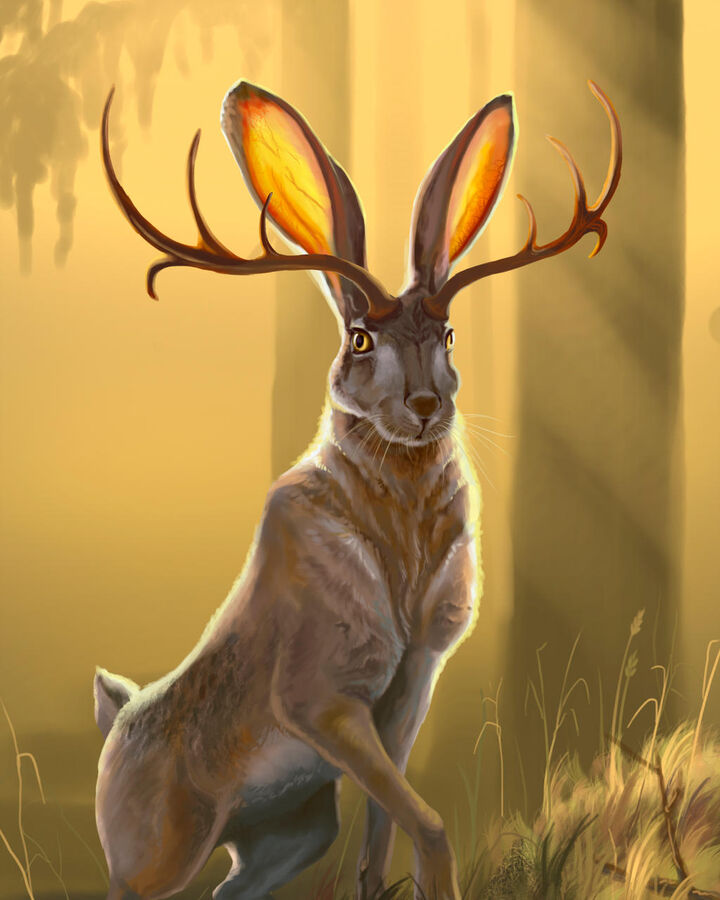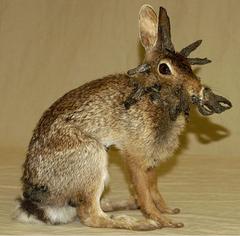
If you travel to any Midwestern state, you will most likely see the bust of a Jackalope for sale. It has become a kitschy souvenir for tourists traveling through. While the busts for sale in the gift shop aren’t real, the animal that inspired it is.

The Jackalope is described as a jackrabbit with the antelope horns. Their popularity started in the 1930’s when taxidermist Douglas Herrick and his brother began selling the busts we still find today. To further their sales they told stories about the mythical creature.

Some of the outlandish tales that have gone along with the Jackalope include the need to wear stovepipe on their legs to prevent the animal from goring you.
Another states you can trap a Jackalope with whiskey, as it is the beverage of choice.
Jackalopes also have the ability to mimic human voices. When cowboys would gather round the campfire and sing, a lone tenor would often join in. This would be the wild Jackalope. It was also said to try to lure cowboys away from their group and leave them stranded in the wilderness.
All these tales notwithstanding, the origins of the Jackalope come from a very real jackrabbit.

The first Jackalopes were determined to be jackrabbits suffering from Shope papilloma virus (SPV). This virus affects rabbits creating keratinous carcinomas that resemble horns. The virus is fatal as the carcinomas affect the animals ability to eat.

The virus was first studied and named in 1933 by Dr. Richard E. Shope in rabbits across the Midwestern United States.
This time line falls exactly with the Herrick Brothers start of the taxidermy Jackalope. They most likely saw the afflicted animals and capitalized on the story.
Sources:
ICTV Taxonomy History for Kappapapillomavirus 2″. International Committee on Taxonomy of Viruses. 2014.
Van Praag, Ester (2003). “Do Horned Rabbits Really Exist?- Papillomatosis”. MediRabbit.com.
Delbridge, Rena (2006-12-16). “Chasing the Jackalope”. Casper Star-Tribune. Casper, Wyoming.
Martin, Douglas (2003-01-19). “Douglas Herrick, 82, Dies”. The New York Times. p. 23.